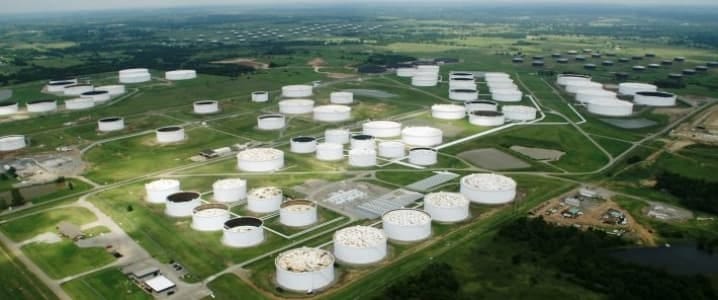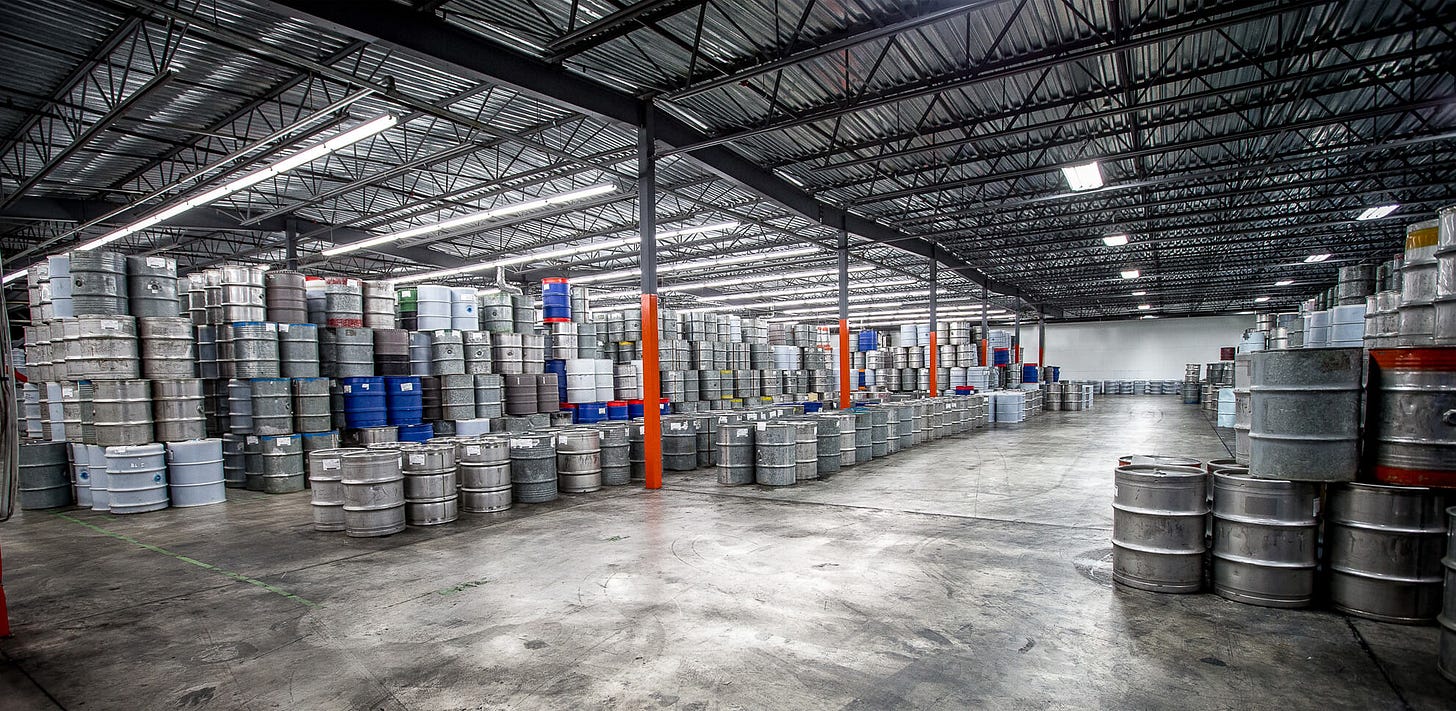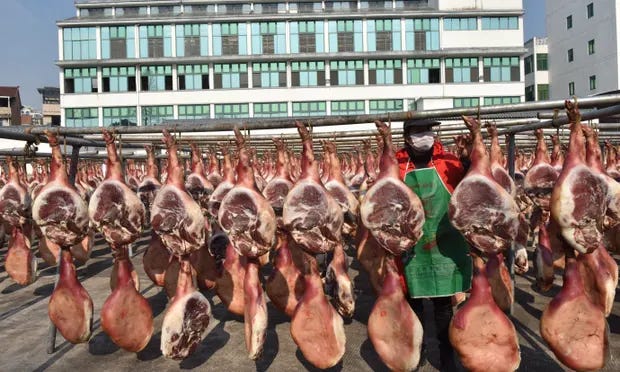You’re reading Flow of Funds, a Substack newsletter that seeks to dig deeper into the intersection of global supply chains and the businesses that surround them. Please go ahead and subscribe—it’s free!—to get these periodic updates sent directly to your inbox. I wouldn’t send you anything that I would not want to read myself!
The Biden administration’s announcement last week of the release of the last of the 180 million barrels of oil planned for release this year from the US Strategic Petroleum Reserve represents a modest yet important bulwark against oil price volatility in today’s unpredictable geopolitical environment. OPEC production cuts are layering onto supply uncertainty brought about by Putin’s war in Ukraine to create a particularly precarious energy situation as our uneven post-COVID economic recovery continues.

SPR releases should not be taken lightly (the process is defined by law) and the stockpile exists as an “emergency brake” of last resort to fend off economically damaging price shocks. Whether this release would be necessary as part of a perfect world’s well-rounded and diverse national energy policy is question for somebody smarter than I am, but it bears noting that commodity reserves around the world are not unusual and governments are quite fond of building and releasing them as needed to help their citizenry.
Petroleum reserves are particularly common throughout the world: America’s is the largest, with a capacity of over 700 million barrels of crude oil, and European Union members are required to keep at least 90 days’ worth of oil imports on hand for when “it” hits the fan. Other strategic oil reserves exist throughout the world. But what about other parts of our lives? Oil is of paramount importance, but so is food and clothing. Here are three less-obvious examples of commodity stockpiles that exist to ease the pain when supply does not equal demand.
Sweet Stability
Canada’s Québec Maple Syrup Producers, a trade organization, offers one such stability mechanism. Since 1989, QMSP has maintained a 45 million kilogram (100 million pound) reserve of maple syrup to satisfy global consumer demand regardless of production capabilities—in spite of the stuff’s ubiquity, it can only be produced under fickle conditions where temperatures are above freezing during the day and below freezing at night. And climate change is, predictably, not helping the situation.

This “OPEC of maple syrup” manifests itself in a 25,000 square meter (270,000 square foot) warehouse outside of Québec City which, at capacity, can hold half of the average annual crop of sirop. Québec, in turn, produces 71 percent of the world’s supply (other Canadian provinces produce 9 percent and the United States 20 percent), the demand for which has almost doubled in the past decade.1
The supply and demand profile of maple syrup is notably different from that of oil. While demand for oil fluctuates with changes in global economic growth patterns, demand for maple syrup is relatively constant. Production of oil, however, is as constant as its producers want it to be (subject to the relative costs of getting it out of the ground and refined). Production of maple syrup, in turn, must be modulated by QMSP if it wishes to meet supply—the consortium’s function in the market is one of reactive demand satisfaction, not proactive price support. So long as the waffles are covered and the farmers are paid, it is unlikely that the Producteurs will cause any OPEC-style geopolitical rifts any time soon.
Reliable Dyeables
Feeding a nation is just one goal of policymakers when looking to stabilize supply. In addition to topping the world’s pancakes and making a wonderful seasonal variation on an Old Fashioned, maple syrup accounts for over half a billion dollars of Canada’s exports annually. These economic benefits are important to the Canadian economy and are a valuable show of soft power abroad, but they are dwarfed by India’s $17 billion effort to clothe the globe with its cotton.

Government-owned Cotton Corporation of India is tasked with stabilizing cotton prices à la OPEC and oil. Established in 1970 with the mandate of supporting the domestic cotton industry, one of CCI’s main policy tools is the purchase and sale of kapas (seed cotton) from farmers and to users with an eye towards minimum prices. Like oil (and as opposed to syrup), the supply of cotton is relatively constant while its demand fluctuates with the world economy. Support for small farmers is critical when the return on a lifetime investment hinges on demand from the other side of the world.
Piggy Bank
Centrally planned economies are not immune to the whims of economic forces. In fact, the distortions caused by throttling the demand for and supply of goods among citizens can cause even greater “whiplash” at both ends of the equation as those frameworks lack the free market’s natural “escape valves” which incentivize production or disincentivize consumption at the margin. Failures of these systems can be catastrophic, and even when they work as intended the results can be lackluster.
Larger questions of ideology aside, China’s policymakers have been faced with the challenge of keeping their people fed as the country’s population has grown over 40 percent since 1980. Population growth has brought with it changes in consumption patterns as well: as the country has urbanized and grown richer, meat eating in particular has grown to more than double that amount in the European Union. Overwhelmingly, pork is their preferred protein, comprising up to 70 percent of meat consumption in some areas.

A 2007 run-up in pork prices (no doubt fortified by memories of the Great Chinese Famine) was cause for the government to establish a reserve stockpile of frozen pork which could be accumulated in times of excess and released in times of shortage, easing pressures on the food supply and, by association, the political climate. The plural of “hangry” can quickly become “revolution”.
China faces unique challenges in maintaining its pork stockpile. Meat, even when frozen, has a finite shelf life and the supply into the stockpile must be monitored as carefully as the demand that is taking it out for final consumption. Live pigs must be maintained, slaughtered, and processed in time to meet the needs of the stockpile, and that same stock must be released to the market before going bad, regardless of actual shortages. Stabilizing the Chinese pork supply chain requires a supply chain in and of itself, but it is a small price to pay to keep the system working.
Any Way You Want It
Canadian maple syrup, Indian cotton, and Chinese pork reserves are just three of the countless examples of commodity supply stability that governments can provide to counter volatile markets.2 The stockpiles exist under free-market and centrally-planned economies, and are operated by private sector cooperatives and government itself.
In fact, these support mechanisms do not look much different at face value in a free market than under a centrally planned one—a "learned hand" (of questionable actual intelligence) moves the economic chess pieces from behind the scenes while John Q. Citizen does business with Megacompany, Inc. at some propped-up prevailing price, none the wiser. There is no advantage to leaving one’s populace completely exposed to raw economic forces, either: whatever rugged individualism they gain from battling global economic forces head-on will be more than offset by the disadvantages they face from other countries that did provide this service. There is security in stability, and it is worth it at almost any cost.
Coincidentally, OPEC controlled the same percentage of the world’s proven crude oil reserves in 2020.
Honorable mentions include the US’s National Helium Reserve and its defunct National Raisin Reserve, European mostly-depleted “wine lakes” and butter mountains, and a proposed Iraqi strategic wheat reserve. The non-profit Svalbard Global Seed Vault could also be viewed as a supply stability mechanism, though its role as a food provider of (actual) last resort prevents it from actively participating in the marketplace.



